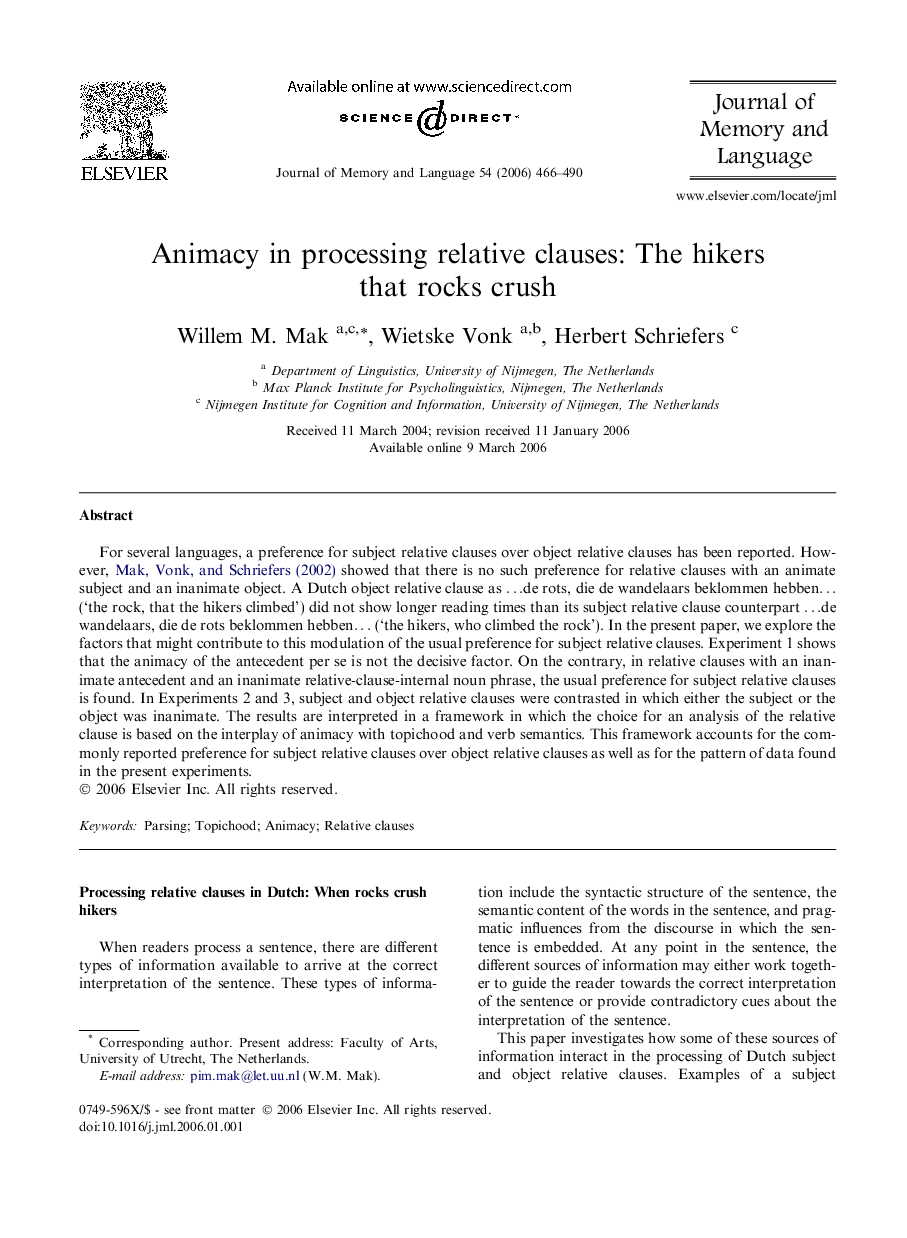| Article ID | Journal | Published Year | Pages | File Type |
|---|---|---|---|---|
| 932395 | Journal of Memory and Language | 2006 | 25 Pages |
For several languages, a preference for subject relative clauses over object relative clauses has been reported. However, Mak, Vonk, and Schriefers (2002) showed that there is no such preference for relative clauses with an animate subject and an inanimate object. A Dutch object relative clause as …de rots, die de wandelaars beklommen hebben… (‘the rock, that the hikers climbed’) did not show longer reading times than its subject relative clause counterpart …de wandelaars, die de rots beklommen hebben… (‘the hikers, who climbed the rock’). In the present paper, we explore the factors that might contribute to this modulation of the usual preference for subject relative clauses. Experiment 1 shows that the animacy of the antecedent per se is not the decisive factor. On the contrary, in relative clauses with an inanimate antecedent and an inanimate relative-clause-internal noun phrase, the usual preference for subject relative clauses is found. In Experiments 2 and 3, subject and object relative clauses were contrasted in which either the subject or the object was inanimate. The results are interpreted in a framework in which the choice for an analysis of the relative clause is based on the interplay of animacy with topichood and verb semantics. This framework accounts for the commonly reported preference for subject relative clauses over object relative clauses as well as for the pattern of data found in the present experiments.
